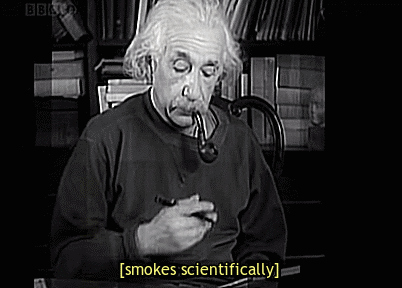MBTI & Ideas -NTP & Systemizing
MBTI & Ideas -NTP & systemizing
Empathizing: “making sense and predicting that person’s behavior”
“The cognitive component of empathy, also referred to as theory of mind, mindreading, or taking the intentional stance, involves setting aside one’s own current perspective,
attributing mental states to the other person, and then making sense and predicting that person’s behavior, given his or her experience.” (1)
Systemizing: “understand and predict the behaviour of non-agentive events”
“Whereas we think of empathising as the drive to identify and respond to agents’ mental states, in order to understand and predict the behaviour of that agent,
we think of systemising as the drive to analyse and build systems, in order to understand and predict the behaviour of non-agentive events.
Systems are all around us in our environment, and fall into at least 4 classes: technical systems (such as machines and tools); natural systems (such as biological and geographical phenomena);
abstract systems (such as mathematics or computer programs); and even social systems (such as profits and losses in a business, or a football league table).
The way we make sense of any of these systems is not in terms of mental states, but more in terms of underlying rules and regularities.” (2)
“Systemizing and empathizing are wholly different kinds of processes”
“Systemizing works for phenomena that are indeed ultimately lawful, finite, and deterministic.
The explanation is exact and its truth-value is defeasible. (“The light went on because switch A was in the down position”).
Systemizing is of almost no use when it comes to predicting the moment by moment changes in a person’s behaviour.
To predict human behaviour, empathizing is required. Systemizing and empathizing are wholly different kinds of processes.
Although systemizing and empathizing are in one way similar – they are processes that allow us to make sense of events and make predictions – they are in another way almost the opposite of each other.
Empathizing involves an imaginative leap in the dark, in the absence of much data. (“Maybe she didn’t phone me because she was feeling hurt by my comment”).
The causal explanation is at best a “maybe”, and its truth may never be provable.
Systemizing is our most powerful way of understanding and predicting the law-governed inanimate universe.
Empathizing is our most powerful way of understanding and predicting the social world.
Ultimately empathizing and systemizing depend on independent regions in the human brain.” (3)
Autistic brain: “the ultimate pattern detector and truth detector”
“When we systemize, we make the implicit assumption that the pattern of data coming into our senses reveals the truth.
My contention is that the autistic brain, being highly tuned to systemize, is the ultimate pattern detector and truth detector.
In a high-functioning individual on the autistic spectrum, such pattern-seeking can reveal scientific truths about the nature of reality, since their systemizing can help the individual understand how things work. (…)
One reason why people with ASD (postulated to be hyper-systemizers) may struggle with empathy and be less interested in topics such as pure fiction, pretence, or deception is that these are not and never will be truth oriented.
Regarding the domain of emotions, human behavior is not 100% lawful.” (4)
See also: Nate Silver

See also: Michio Kaku

See also: Yanis Varoufakis

Sources:
Keep reading
More Posts from Possiblyfromorion and Others

The Difference between ENTPs and INTPs
Let’s be honest, a lot of people confuse ENTPs and INTPs. Is it possible to figure out why that is? Well, probably only an xNTP can figure it out.
It’s easy to confuse an ENTP for an INTP because they share the same cognitive functions. INTPs are Ti-Ne-Si-Fe, while ENTPs are Ne-Ti-Fe-Si. An individual who’s good at juggling those functions can easily come off as something they’re not. This applies to all introvert versus extrovert dichotomies.
But here’s the thing. When you switch I for E, the top function changes from a judging function to a perceiving function or vice verse. I can’t speak for the other switches, but in INTPs vs ENTPs, this can be pretty obvious - at least to me, considering I am one.
In a nutshell, INTPs take something complicated and make it simple. ENTPs take something simple and make it complicated.
Now, neither of these is good nor bad, it’s just how we function. But let’s explore it.
INTPs have Ti first and Ne second. That means an INTP is predominantly a judger; he or she likes to have things decided. The thing is, this judging function is internal, so that decisiveness is internal. That means an INTP’s concern is primarily with ideas and internal life, where an INTP can narrow down an idea down to its most basic core. This is how an INTP “takes something complicated and makes it simple”. An INTP is far more concerned with absorbing an idea through Ne and stripping it down with Ti, in order to connect it back to other ideas with Ne.
In contrast, ENTPs lead with Ne and have Ti second. When Ne leads, it wants to project outwards and see what’s out there. In this case, Ti serves as a leash, to make sense of and organize all the ideas and data coming in from Ne. In the case of an ENTP, the logic is there to gain an understanding of an idea, and then intuition wants to expand on that and explore the possibilities. In this way, the Ne overrides the Ti - it’s not about cutting down to the core of an idea, so much as understanding an idea enough to see what its possibilities are.
Now, neither of these are better than the other. I know a lot of ENTPs and they’re fantastic people to interact with. But the reality of the situation is that if you understand the difference, they have very different motivations. The INTP wants to understand what is, and the ENTP wants to understand what could be.
So there you have it. Ignore social conventions, and try to pay attention to where a conversation goes. The INTP will try to close down options and come down to a single idea, whereas the ENTP will try to open up options and see what a single idea can mean.
Does that help at all?

meirl
ISTJ Fictional Tropes
Like anything in fiction there are always tropes. This include characters based on their MBTI. Now not all characters that are ISTJ fit into these exact tropes and many fit into multiple as you will note in the examples. The following are major tropes these ISTJ characters have a pattern of falling into and I think they help define their type as a whole in the big picture. Hopefully, this can be almost a quick cheat sheet at times when typing characters.
Traditional Leader

These characters are what we think of as your typical leader. They are the ones you trust because they stick to their center, what they feel is right. They’re usually fiercely loyal. These leaders are service oriented. They don’t see themselves as in control, but as serving a role, one that would exist without them. One they choose out of some sense of responsibility or duty to uphold.
Examples: Commander Lexa (The 100), Captain Ray Holt (Brooklyn Nine-Nine), Queen Elizabeth II (The Crown), Lord Eddard Stark (Game of Thrones), Stannis Baratheon (Game of Thrones), George Washington (Hamilton: An American Musical), Thorin (The Hobbit), Fergus (Pixar’s Brave), Theodon (The Lord of the Rings), Powhatan (Disney’s Pocahontas), Queen Catherine of Aragon (The Tudors), Kercheck (Disney’s Tarzan), King George (Once Upon a Time), Elsa (Disney’s Frozen and Once Upon a Time), and Rick Grimes (The Walking Dead).
Detective/Inspector

Most of these character actually are cops, detectives, inspectors, but that is not exactly what this means. This trope for the ISTJ involves them being excited by their inferior Ne. They love to solve things methodically with Si-Te, but get excited by solving puzzles and investigating using their Ne. These types are interested in the truth and their duty to reveal the truth. They will often be willing to break the law/rules in order to uncover the truth. Their loyalty is to what their role upholds, not to people please. The ISTJ is self sacrificing and is okay being painted negatively if the result leads to the truth and justice.
Examples: Quentin Lance (Arrow), Mako (Avatar: Legend of Korra), Captain Ray Hold (Brooklyn Nine-Nine), Barbara Gordon/Batgirl/Oracle (DC Comics), Joe Swanson (Family Guy), Tina Goldstein (Fantastic Beasts and Where To Find Them), Chloe Decker (Lucifer), Inspector Chester Campbell (Peaky Blinders), James Gordon (Gotham and DC Comics), Bonnie Winterbottom (How To Get Away With Murder), Sara Lance (Arrow and Legend of Tomorrow), Javert (Les Miserables), Shikamaru Naru (Naruto Shippuden), Bartholomew Rusk (Penny Dreadful), Anderson (BBC’s Sherlock), Jim Hopper (Stranger Things), Sam Winchester (Supernatural), Sheriff Stalinski (Teen Wolf), Nobuchika Ginoza (Psycho-Pass), and Rick Grimes (The Walking Dead).
Dutiful Soldier

ISTJ characters that fit this trope are often soldiers, however, it isn’t a requirement to be part of this trope. These ISTJs are dedicated to a cause and remain personally connected and loyal to it. They are highly dependable in performing their duty, whatever that role may be. Their tertiary Fi, often influences them morally to be connected to a cause. They work hard and always follow through on a task. This isn’t about following rules created by a system blindly. These character follow a code and if that means breaking the rules to uphold a personal code, they will do it.
Examples: Allison Argent (Teen Wolf), Takashi Morinozuka (Ouran High School Host Club), Mulan (Once Upon a Time), Norrington (Pirates of the Caribbean), Fujitora (One Piece), Bartholomew Rusk (Penny Dreadful), Yamato (Naruto Shippuden), Mako Mori (Pacific Rim), Athos (BBC’s The Musketeers), Ardeth Bay (The Mummy Film Series), Li Shang (Disney’s Mulan), Mike Wazowski (Monsters, Inc.), Mameha (Memoirs of a Geisha), Natasha Romanoff/Black Widow (Marvel Cinematic Universe), Claire Temple (Netflix’s The Defenders Universe), Sebastian (Disney’s The Little Mermaid), Zazu (Disney’s The Lion King), Cogsworth (Disney’s Beauty and the Beast), Harry/Galahad (Kingsman: The Secret Service), Astrid (How To Train Your Dragon), Dr. Eric Foreman (House, MD), Legolas (The Hobbit and The Lord of the Rings), Maximus (Gladiator), Brienne of Tarth (Game of Thrones), Riza Hawkeye (Fullmetal Alchemist: Brotherhood), Zoe Washburne (Firefly), Danny Pink (Doctor Who), Katana/Tatsu Toro (DC Comics), Starfire (DC Comics), Melinda May (Agents of S.H.I.E.L.D.), Jack Thompson (Agent Carter), Indra (The 100), Maggie Greene (The Walking Dead), and Alex Danvers (Supergirl).
The Specialist

This ISTJ is a master of something. They are so focused and will know every fact about their specialization. Whatever they love is part of their identity, it is what defines them and the use of concrete sensing facts is what helps them relate to their interest. When an ISTJ character is dedicated to a passion, no one knows as much as they do about it.
Examples: Hope Van Dyne (Ant-Man), Gray Fullbuster (Fairytail), Sheldon Cooper (The Big Bang Theory), Dr. Caitlin Snow (The Flash), Bob Belcher (Bob’s Burgers), Ross Gellar (Friends), Tatsu Toro/Katana (DC Comics), Riza Hawkeye (Fullmetal Alchemist: Brotherhood), The Swede (Hell on Wheels), Bill Weasley (Harry Potter Series), Doug Guggenheim (House of Lies), Hailey (Mozart in the Jungle), Ben Wyatt (Parks & Recreation), Homura Akemi (Madoka Magica), Uhura (Star Trek Film Series), Lt. Commander Data (Star Trek: The Next Generation), Edward Cullen (Twilight Saga), Natasha Romanoff/Black Widow), and Unalaq (Avatar: Legend of Korra).
Family-Oriented Center

These characters deeply care for their family (not necessarily genetic) and are often found as the grounding center. They may not seem caring like their ISFJ counterparts, but these ISTJ characters are harsh defenders of their families and are often the character others rely on as a steady constant in their lives. When this steady constant falls, many times the family does as well. They are the foundation of their family unit.
Examples: Alexei Alexandrovich Karenin (Anna Karenina), Quentin Lance (Arrow), Ross Geller (Friends), Bob Belcher (Bob’s Burgers), Ned Stark (Game of Thrones), Fergus (Pixar’s Brave), Dean Forester (Gilmore Girls), Mallory Hanson (Grace and Frankie), Maximus (Gladiator), Sophie (Howl’s Moving Castle), Bagheera (Disney’s The Jungle Book), Theodon (The Lord of the Rings), Chloe Decker (Lucifer), Powhatan (Disney’s Pocahontas), Sun Bak (Sense8), Elinor Dashwood (Sense and Sensibility), Fiona Gallagher (Shameless), Red Forman (The ‘70s Show), Edward Cullen (Twilight Saga), Elena Gilbert (The Vampire Diaries), and Maggie Greene (The Walking Dead).
Zealot

The Zealot ISTJ character is often being unwillingly controlled by their inferior Ne. They find the outer world with it’s constant change in meaning separate from their own deep, personal inner meaning is in conflict. They fear change and try to fight it with everything they have. If they admit that the world has this changing meaning outside of themselves they feel everything they believe in is threatened and are unable to cope with such conflict. They refer to their tertiary Fi for comfort and try to morally back their subjective perspective up with subjective judgement. Thereby fueling their own opinion and clinging to their personal identity, unchanging. Many ISTJ villains fall into this trope, but not all are villains. That is important to keep in mind.
Examples: Grinch (Ron Howard’s How The Grinch Stole Christmas), Alexei Alexandrovich Karenin (Anna Karenina), Claude Frollo (Disney’s The Hunchback of Notre Dame), Sheldon Cooper (Big Bang Theory), Javert (Les Miserables), Ross Geller (Friends), Sam Healy (Orange is the New Black), Angela Martin (The Office), Elsa (Disney’s Frozen), P.L. Travers (Saving Mr. Banks), Dean Forester (Gilmore Girls), Lord Voldemort/Tom Riddle (Harry Potter Series), The Swede (Hell on Wheels), Nessarose (Wicked: The Life and Times of the Wicked Witch of the West Novel), Theo Galavan (Gotham), and Unalaq (Avatar: Legend of Korra).
The Cynic

The ISTJ cynics are often mistyped because they don’t really believe in anything. They are often misread as ISTP to be honest. But the Cynic ISTJ is indeed, very ISTJ. They are some of the most ultimate realists, not seeing the light at the end of the tunnel. They usually have life experiences of pain that has formed their perception of reality. Their dominant Si seeing the facts, not fanciful ideals. Their tertiary Fi not seeing or growing up with that feeling that they or anyone else is a special snowflake. They often are lost, without a cause, not trusting those with big ideals. They see things as they are and nothing more. They are the bluntest ISTJ filled with some of the most ironic humor. They are usually disappointed with their lot in life.
Examples: John Murphy (The 100), Mai (Avatar: The Last Airbender), Chas Chandler (Constantine), Helga Katrina Sinclair (Disney’s Atlantis: The Lost Empire), Phantom Stranger (DC Comics), Gwynne (Galavant), Mad-Eye Moody (Harry Potter Series), Suzana Ayuwaza (Maid-Sama), Shikamaru Naru (Naruto Shippuden), Dinesh (Silicon Valley), and Princess Kwenthrith (Vikings).
“This is my simple religion. There is no need for temples; no need for complicated philosophy. Our own brain, our own heart is our temple; the philosophy is kindness.”
—
Dalai Lama



I can’t believe they oblitered straight men like that

meirl






Spellbound glow worm cave tour in waitomo, New Zealand 🇳🇿 It’s was a once in a life time experience to see the very impressive glowworm display. Any pictures taken will not do justice to such a breath taking spectacle. We had to let our eyes adapt to the darkness and we were rewarded with the soft glow of many of thousands of glowworms(technically maggots) There are enough glow worms to gently light up an entire cave and reveal all that the cave has to offer. Then we walked through a lovely succession of chambers to find speleothems, fossil remains of extinct moa(huge ostrich like bird extinct about 700 years ago)and cathedrals filled with natural light, softly falling to the floor. Even though some parts where in complete dark(not even the light from the glow worms) our guide Norm made sure we where safe and he was extremely knowledgeable and super friendly, there is a element of relaxation on the tour that made it even more enjoyable.
Explore this world, live the life that you were made for.
Shirts are crazy, your body goes in 1 hole and out 3
-
 disneydude07 liked this · 2 years ago
disneydude07 liked this · 2 years ago -
 belugabay reblogged this · 4 years ago
belugabay reblogged this · 4 years ago -
 weirdestloneraround liked this · 6 years ago
weirdestloneraround liked this · 6 years ago -
 follyage liked this · 7 years ago
follyage liked this · 7 years ago -
 allocaro liked this · 7 years ago
allocaro liked this · 7 years ago -
 belgutstark liked this · 7 years ago
belgutstark liked this · 7 years ago -
 soratie liked this · 7 years ago
soratie liked this · 7 years ago -
 chazb02 liked this · 7 years ago
chazb02 liked this · 7 years ago -
 lailabailey liked this · 7 years ago
lailabailey liked this · 7 years ago -
 viewfromsaturday liked this · 7 years ago
viewfromsaturday liked this · 7 years ago -
 msnova-scotia liked this · 7 years ago
msnova-scotia liked this · 7 years ago -
 coolthenephilim liked this · 7 years ago
coolthenephilim liked this · 7 years ago -
 charactersandcognition reblogged this · 7 years ago
charactersandcognition reblogged this · 7 years ago -
 gildin liked this · 7 years ago
gildin liked this · 7 years ago -
 annastasiyen-blog liked this · 7 years ago
annastasiyen-blog liked this · 7 years ago -
 mayothefirst liked this · 7 years ago
mayothefirst liked this · 7 years ago -
 possiblyfromorion reblogged this · 7 years ago
possiblyfromorion reblogged this · 7 years ago -
 possiblyfromorion liked this · 7 years ago
possiblyfromorion liked this · 7 years ago -
 frozenblueberryswan liked this · 7 years ago
frozenblueberryswan liked this · 7 years ago -
 thoughtfulpiratephantom liked this · 7 years ago
thoughtfulpiratephantom liked this · 7 years ago -
 omgspookykookie liked this · 7 years ago
omgspookykookie liked this · 7 years ago -
 wildr0sechan liked this · 7 years ago
wildr0sechan liked this · 7 years ago -
 nellgrey liked this · 7 years ago
nellgrey liked this · 7 years ago -
 xriia liked this · 7 years ago
xriia liked this · 7 years ago -
 suzy-the-creator liked this · 7 years ago
suzy-the-creator liked this · 7 years ago -
 intriguing-if-not-useful reblogged this · 7 years ago
intriguing-if-not-useful reblogged this · 7 years ago -
 soft-for-xie-lian liked this · 7 years ago
soft-for-xie-lian liked this · 7 years ago -
 kajagoogoodolls liked this · 7 years ago
kajagoogoodolls liked this · 7 years ago -
 captainsupernoodle liked this · 7 years ago
captainsupernoodle liked this · 7 years ago -
 demiugh liked this · 7 years ago
demiugh liked this · 7 years ago -
 wrenb77 liked this · 7 years ago
wrenb77 liked this · 7 years ago -
 holisticfansstuff reblogged this · 7 years ago
holisticfansstuff reblogged this · 7 years ago -
 holisticfansstuff liked this · 7 years ago
holisticfansstuff liked this · 7 years ago -
 casualnerdgirl reblogged this · 7 years ago
casualnerdgirl reblogged this · 7 years ago
